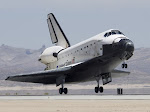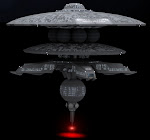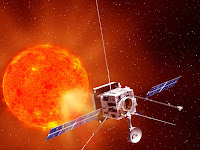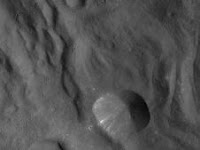
NASA's Cassini mission will take advantage of the position of two of the three stars in Orion's belt when the spacecraft flies by Saturn's moon Enceladus on Wed., Oct. 19. As the hot, bright stars pass behind the moon's icy jets, Cassini's ultraviolet imaging spectrograph will acquire a two-dimensional view of these dramatic plumes of water vapor and icy material erupting from the moon's southern polar region. This flyby is the mission's first-ever opportunity to probe the jets with two stars simultaneously, a dual stellar occultation.
From Cassini's viewpoint, the closest of Orion's stars will appear about 9 miles (15 kilometers) above the moon's limb, or outer edge. The second star will appear higher, about 19 miles (30 kilometers) from the limb. In the foreground will be Enceladus' icy plumes, which extend hundreds of miles into space.
As the spacecraft passes Enceladus, its infrared instruments, cameras and other instruments will also be monitoring activity on the moon. The orbiter will fly within about 765 miles (1,230 kilometers) of Enceladus' surface.
This flyby will provide researchers with new insight into the jets--their content, the speed at which they are travelling and how they vary. It will also provide new information on the famed "tiger stripes" from which the jets erupt. These fissures in Enceladus' surface are the "nozzles" from which the plumes are propelled at supersonic speeds. Knowing more about their structure may help unlock some of the secrets within Enceladus' interior, including the source of the water-rich plumes.
The Cassini mission celebrated the 14th anniversary of the spacecraft's launch last week. Having completed its four-year prime mission in 2008, the mission is now on its second extension, the Cassini Solstice Mission. One of the mission's goals is to provide further information on previous Cassini discoveries, such as lakes on Titan and plumes on Enceladus, first detected by Cassini in 2005.
The Cassini-Huygens mission is a cooperative project of NASA, the European Space Agency and the Italian Space Agency. The Jet Propulsion Laboratory, a division of the California Institute of Technology in Pasadena, manages the mission for NASA's Science Mission Directorate in Washington. The Cassini orbiter and its two onboard cameras were designed, developed and assembled at JPL.




















